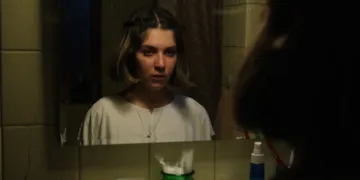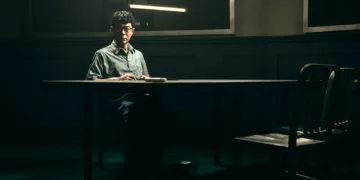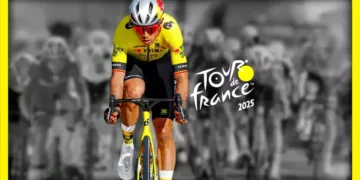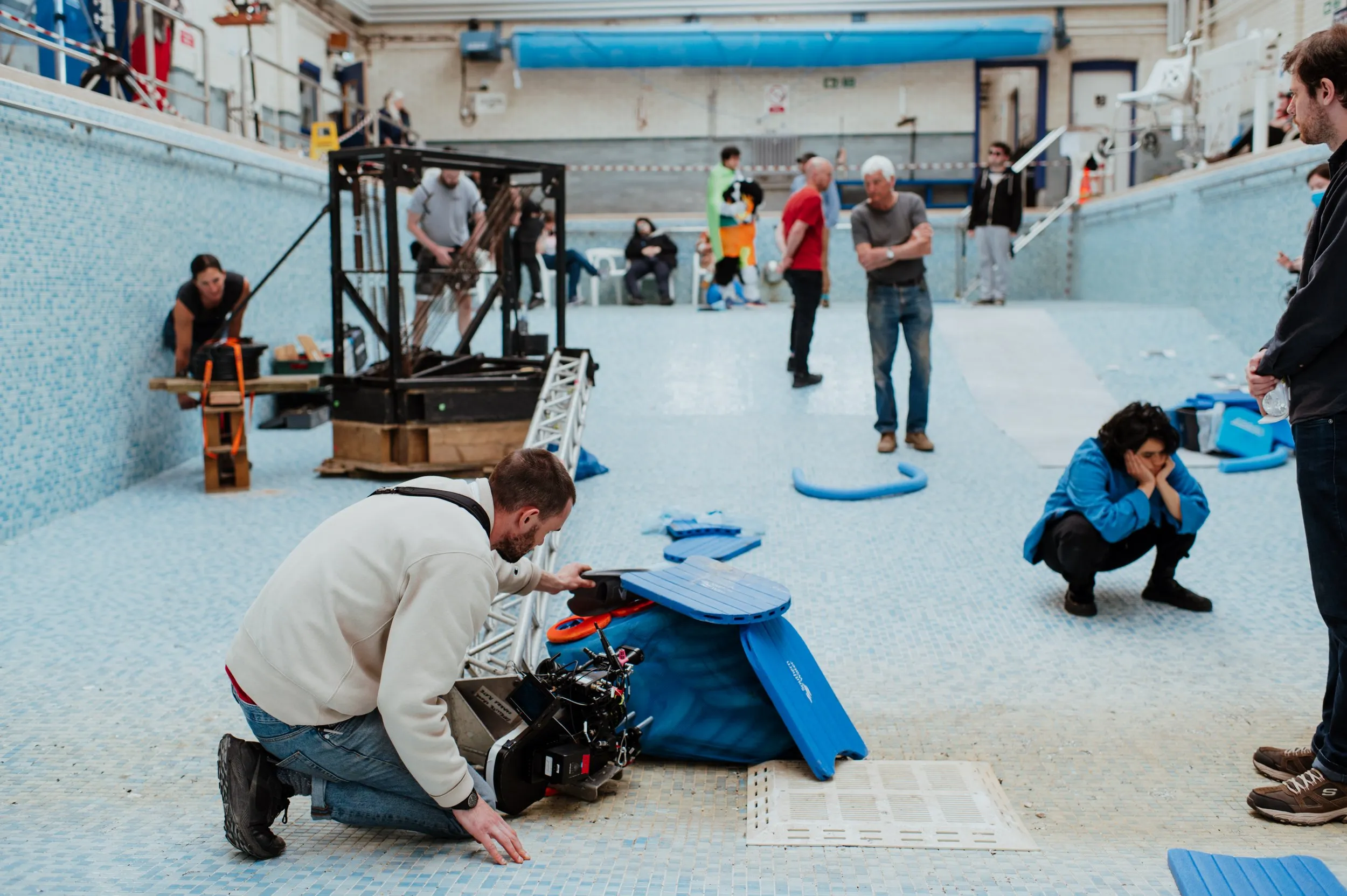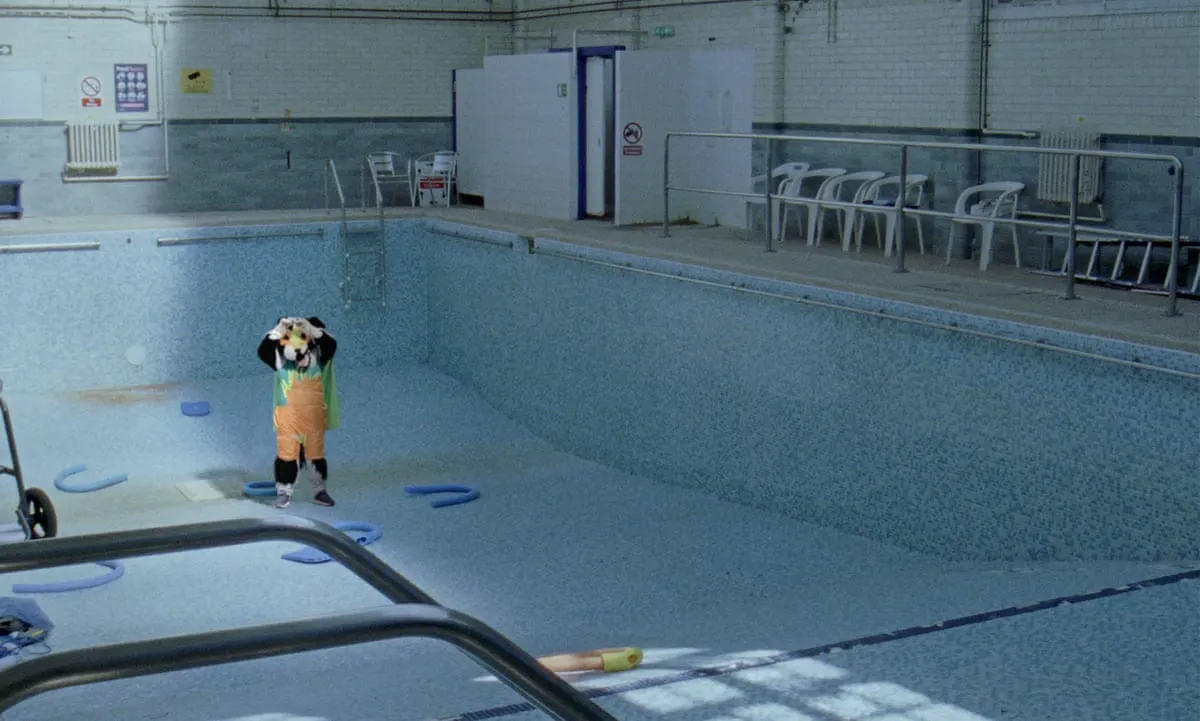The ambition of “The Stimming Pool” is not merely to show autism, but to approximate its sensory signature, a task many a filmmaker before has wisely (or perhaps timidly) sidestepped. What results is an attempt at an “autistic camera,” a cinematic consciousness that drifts and alights with a logic alien to the tidy narratives we’re spoon-fed. Its structure is resolutely non-linear, a mosaic of moments that connect through an unseen, felt tissue rather than the cause-and-effect mechanics of standard storytelling.
One might say it moves by association, like a mind allowed to wander its own idiosyncratic pathways, a direct, if sometimes befuddling, challenge to neurotypical filmmaking’s often rigid insistence on legibility above all else. This hybrid creation, part observation, part fantastical projection, doesn’t so much tell you about an experience as invite you (or is it gently shove you?) into a simulation of its processing. Whether one emerges enlightened or simply having had a peculiar art-house Tuesday is, of course, up for grabs.
A Cast of Real People, Imagined Realities
The film introduces us to individuals from the Neurocultures Collective, each a distinct node in this distributed network of perception. We meet Robin Elliott-Knowles, a connoisseur of B-movies, preparing to host a screening. His passion is a palpable shield, a space of deep comfort contrasting with the visible static of broader social engagement – a familiar dance for anyone whose obsessions are truer companions than most people.
Then there is Sam Chown Ahern, undergoing a cognitive assessment, her spoken thoughts a direct line to the maddening imprecision of trying to fit a unique consciousness into standardized boxes. The film cleverly projects the eye-tracking test she endures, red dots skittering across a screen-within-a-screen, a stark visualization of a gaze quantified, perhaps even a subtle jab at our societal mania for measurement.
Lucy Walker’s creation, Chess the Border Collie – sometimes embodied by Walker herself in a charmingly earnest costume – appears as a sort of spirit guide, a creature of heightened senses navigating a world of overwhelming stimuli. These vignettes, including an office worker (portrayed by Andrea Spisto) meticulously performing “normalcy,” sketch a multifaceted, if fragmented, map of neurodivergent lives, less a complete atlas than a series of compelling sketches from the frontier.
The Architecture of Sensation
The visual language of “The Stimming Pool” is crucial to its project. Gregory Oke’s cinematography (yes, the eye behind “Aftersun”) lends the images a textured, almost tactile quality, scenes filmed on celluloid possessing that certain shimmer of light caught just so.
There’s a recurring, dream-saturated sequence in a Louisiana-esque bog, all gnarly roots and water, the camera low, gliding, that feels less like a setting and more like a state of mind – a visual correlative for depth, for the subconscious, perhaps even for a kind of primal, pre-verbal awareness. Sound design, too, is instrumental, amplifying the aural landscape to suggest the heightened sensitivities often reported by autistic individuals; the world is not muted here, but rather acutely, sometimes painfully, resonant.
Editing eschews conventional rhythm, preferring a logic of collage, where live-action bleeds into animated sequences (like Elliott-Knowles’s delightfully gruesome Civil War zombie short) and digital artifacts from tests become part of the film’s visual fabric. These are not flourishes; they are the very grammar of the film, an attempt to construct a neuro-cinematic dialect. (Or perhaps that’s too grand a term for it, but the effort is plain.)
Echoes in the Stimming Chamber
Ultimately, “The Stimming Pool” meditates on the cartography of difference. It explores the creative efflorescence that can spring from neurodiversity, while also depicting the draining labor of “masking” – that constant, quiet performance of fitting in, a psychic tax levied by a world that prizes conformity.
The concept of “stimming,” those repetitive self-soothing actions, finds its apotheosis in the film’s title scene: the collective gathered in a stark, empty swimming pool. This location, stripped of its usual function, becomes a zone of liberation, a space for uninhibited self-expression, a concrete metaphor for carving out psychic territory.
The film does not offer easy answers; its fractured form can be disorienting, even irritating, if one approaches it seeking a conventional documentary’s reassurances. Yet, this refusal of straightforwardness might be its most significant gesture, an invitation (or provocation) to adjust our own perceptual settings.
It nudges us, not towards a simple understanding of “autism,” but towards acknowledging the vast, varied, and frequently unseen landscapes of human consciousness. It’s a piece that sits with you, not always comfortably. And that, one suspects, is precisely the point.
The Stimming Pool premiered at CPH:DOX in Copenhagen in 2024 and has been featured in various international film festivals.
Full Credits
Directors: Steven Eastwood, Sam Chown-Ahern, Georgia Kumari Bradburn, Benjamin Brown, Robin Elliott-Knowles, Lucy Walker
Producers: Steven Eastwood, Chloe White
Cast: Andrea Spisto (The Shapeshifter), Sam Chown-Ahern (Sam), Robin Elliott-Knowles (Robin)
Director of Photography (Cinematographer): Gregory Oke
Editors: Sergio Vega Borrego
Composer: Tom Haines
The Review
The Stimming Pool
A challenging, formally adventurous film, "{{The Stimming Pool}}" attempts (with considerable artistry) to articulate autistic experience through sensation rather than story. Its oblique structure may frustrate some, yet its commitment to a truly different perceptual offering is undeniable. A potent, if not always comfortable, watch.
PROS
- A bold attempt to cinematically render autistic ways of seeing.
- Artistically crafted with striking visuals and resonant sound design.
- Offers a rare, deeply felt glimpse into varied neurodivergent lives.
- Challenges viewers to engage with different perceptual frameworks.
- Rich with symbolic meaning and intellectual substance.
CONS
- Its experimental, non-linear form may prove difficult for some viewers.
- Meaning can at times feel elusive due to its associative, fragmented structure.
- Not a film that provides easy comforts or straightforward resolutions.



















